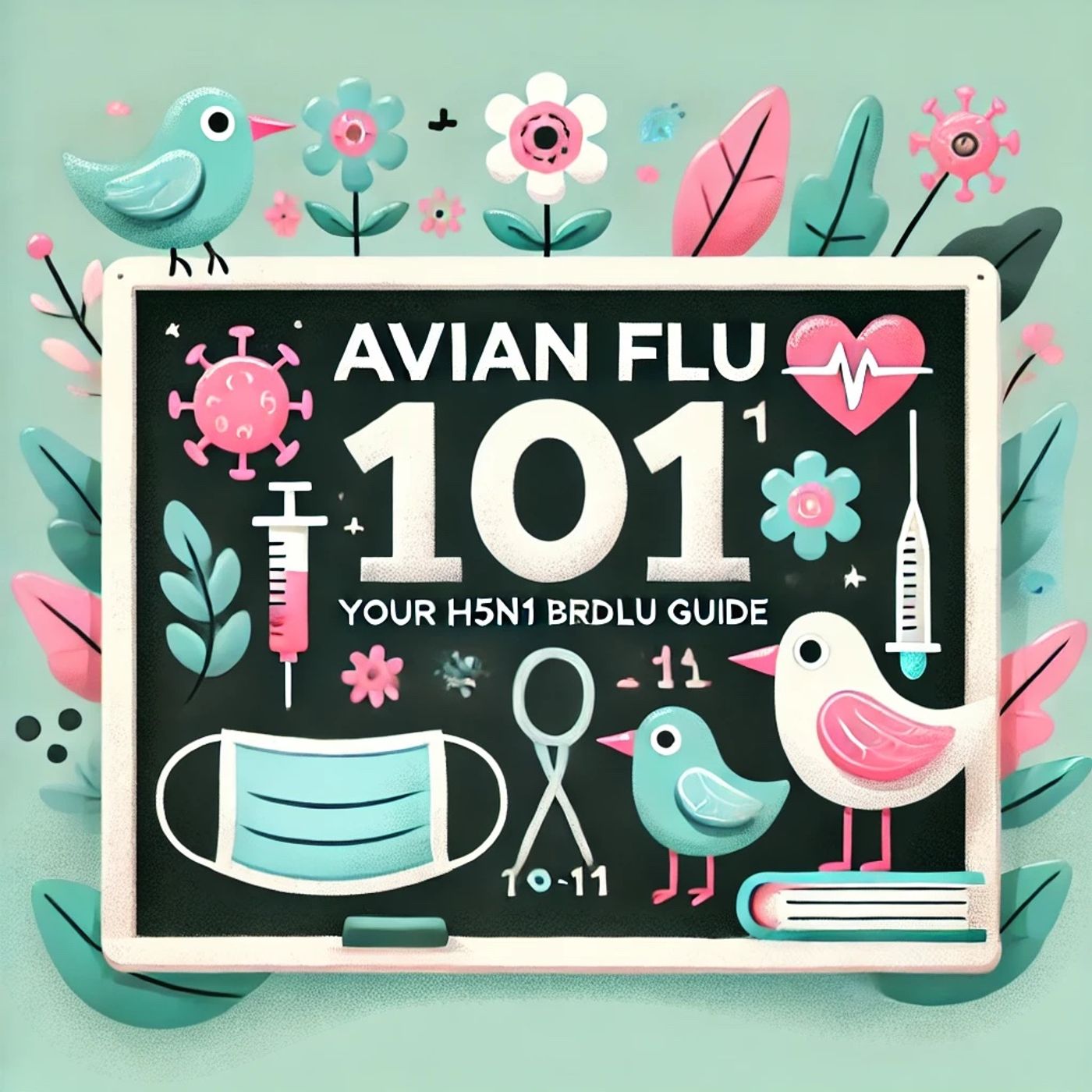Listen "H5N1 Bird Flu Guide: Understanding the Avian Influenza Virus and Protecting Yourself from Potential Transmission"
Episode Synopsis
Welcome to Avian Flu 101: Your H5N1 Bird Flu Guide. Today, we’ll explore the avian flu, a virus particularly known as H5N1. We'll break down what it is, its history, and what makes it different from other familiar viruses.Viruses are tiny organisms, much smaller than we can see, composed of genetic material surrounded by a protein coat. Think of them as hijackers that invade living cells, using them to reproduce. The H5N1 bird flu is one such virus that primarily affects birds.The avian flu gained global attention with several outbreaks, especially in the early 2000s. In 2005, H5N1 spread across countries, with cases in Asia, Europe, and Africa, leading to culls of poultry to prevent its spread. Fortunately, human transmission is rare but concerning when it occurs due to its severity.For some clarity on terminology: H5N1 is a type of avian influenza virus. The "H" stands for hemagglutinin and the "N" for neuraminidase. These proteins are on the virus surface and help it enter cells. This is akin to a lock and key, where the virus must find the right lock to infect a cell.Humans occasionally get infected through direct or close contact with infected birds, similar to sticking your hand in a beehive—usually not a great idea, but it can happen by accident. The virus isn’t efficient at spreading from human to human, which limits pandemics.Now, let's compare H5N1 to seasonal flu and COVID-19. Seasonal flu is highly adaptable, spreading easily among humans, leading to regular outbreaks. COVID-19, caused by the SARS-CoV-2 virus, impacted the world significantly since it is highly transmissible and can spread even without symptoms. In contrast, H5N1 doesn't spread easily among people, but is much deadlier when it does.To wrap it up, let’s go over some common questions: How dangerous is H5N1 to humans? While rare, its mortality rate is high, a cause for concern. Is it a threat to my backyard birds? It primarily affects domesticated poultry, but pet birds could be at risk if exposed. Can cooking chicken spread the virus? Cooking poultry to an internal temperature of 165 degrees Fahrenheit kills the virus.Staying informed and maintaining good hygiene and biosecurity measures are key to preventing spread and ensuring safety. Avian flu may sound daunting, but with awareness and careful monitoring, its impact can be contained. Stay tuned for more educational content, and as always, knowledge is our best tool for preparedness.This content was created in partnership and with the help of Artificial Intelligence AI
More episodes of the podcast Avian Flu 101: Your H5N1 Bird Flu Guide
H5N1 Bird Flu Guide: What You Need to Know About Avian Influenza Symptoms, Transmission, and Safety
14/11/2025
H5N1 Bird Flu Explained: What You Need to Know About Transmission, Symptoms, and Current Risk Levels
12/11/2025
H5N1 Bird Flu Explained: What You Need to Know About Avian Influenza and Human Health Risks
10/11/2025
H5N1 Bird Flu Explained: What You Need to Know About Avian Influenza and Human Risk in 2024
08/11/2025
H5N1 Bird Flu Explained: What You Need to Know About Transmission, Risks, and Prevention in 2024
03/11/2025
 ZARZA We are Zarza, the prestigious firm behind major projects in information technology.
ZARZA We are Zarza, the prestigious firm behind major projects in information technology.
